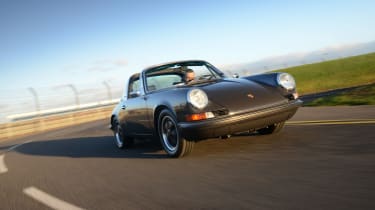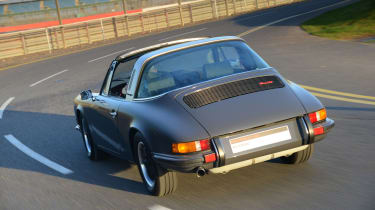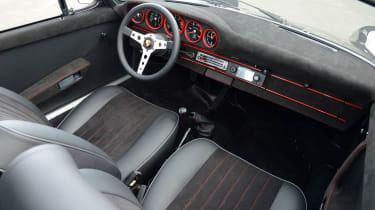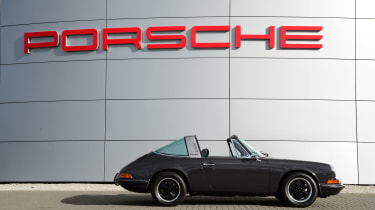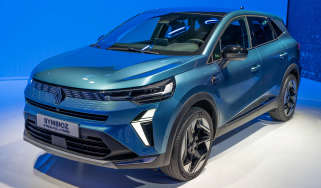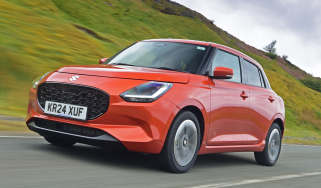1966 Porsche 911 Targa
Price new/now: £3,152 (1973)/£45,000Engine/power: 2.0-2.4 flat-six/110-190bhp0-60/Top speed: 8.3-6.5 secs/124-145mphNumber produced: 26,036
Porsche’s first car – the 1948 356/1 prototype – was an open two-seater roadster. As the production 356 Cabriolet and Roadster models had built up a loyal customer base, it was hardly surprising that, early in the 911’s life, Ferry Porsche wanted an open version of his new sports car. However, with its fixed roof bar, the Targa took a different approach to its predecessors.
Named after the famous Targa Florio road race, in which Porsche achieved more post-war wins than any other manufacturer, the Targa was announced in 1965 and went into production in December 1966. The first versions had a 2.0-litre flat-six and came with a plastic zip-out screen. They proved to be popular after initial concerns from dealers in the crucially important Californian market that the Targa wasn’t ‘open’ enough to be a real wind-in-the-hair sports car.
By 1969, the zip-out plastic rear screen had been replaced by a more attractive heated glass unit. The distinctive polished stainless steel roll bar remained and it now featured three neat vertical cabin air outlets on the side of the hoop – a classic feature that returns on the latest car. And while opening quarter-light windows had been deleted from the Coupé, they remained on the Targa.
Inside, the classic five-dial 911 dash was unchanged from the coupé, and the Targa roof meant the tiny but useful rear seats were not lost to a tonneau cover or roof mechanisms. The central roof panel was unbolted with an Allen key and then easily lifted out, while the glass rear screen remained in place.
The recently restored car in our pictures is a 1973 911T. With a 130bhp 2.4-litre engine, it sounds and drives in the classic way that only early 911s do. The engine coughs and splutters into life, but it becomes ever slicker and more tuneful as the revs build. The unassisted steering is heavy at low speed but, once on the move, the directness of the 911’s turn-in, the car’s unique weight balance and agility all begin to shine through.
The driving experience of early 911s was quite unlike that of any of their contemporary rivals. And the beauty of the Targa was that, to a point, it didn’t demand a huge dynamic compromise over the Coupé.
The groundbreaking roll-over bar acted as a chassis stiffener and allowed Porsche’s engineers to avoid the significant weight increase that tends to accompany extra rigidity. With identical lower body panels and floor to the Coupé, the Targa was around 50kg heavier, and while its torsional rigidity wasn’t quite as good as its stablemate’s, it was close enough to ensure that the Targa felt much like other models in the range in everyday driving.
This was especially the case on later cars with the glass rear screen, which were stiffer than early Targas with the zip-up plastic window.
By striking such a successful balance between handling, style and open-air motoring, the 911 Targa secured its future.
